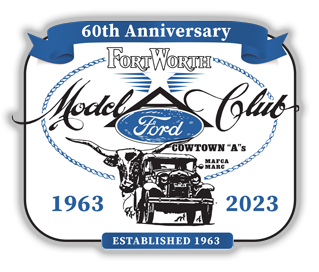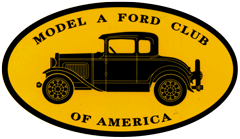Questions & Answers
Welcome to our Q&A section. This is just a glimpse of the extensive information shared by MAFCA Technical Directors based off their knowledge on various aspects of the Model A Ford. For a more detailed and comprehensive collection of questions and answers, please visit the full archive at MAFCA.com. There, you’ll find a organized menu categorizing a wide array of topics, from engine mechanics to body restoration. This rich resource provides an in-depth exploration of the Model A Ford.
Have a Question?
In order to submit a Technical Question, you must be a MAFCA member. To verify your MAFCA membership, you are required to submit your First and Last name and MAFCA Membership Number with your request.
It's been a couple of years since this information was in the newsletter, and we have quite a few new members. If they go to [...]
Yes, this could be one of the issues causing a car to shimmy. A loose ball in the front wishbone can be one of the causes of front shimmy. The front-end caster (5 degrees) is dependent on the exact position of the front radius ball. Make sure you have all the correct pieces to mount the radius ball to the bottom of the fly-wheel housing.
My car has the drum tail light with the cast bracket attached to the rear body subframe, as it's a 1928 model. I'm looking for information about the dimensions and locations of the three holes on the right-hand side to mount the new RH bracket (Bratton's #19340).
In the early 1990s, MAFCA member Jim Parcelluzzi included wiring diagrams on the MAFCA Clip Art disk. You can find copies of these diagrams on the MAFCA website. Here are some specific diagrams available: 1928 Wiring Chart - 1929-1931 Wiring without Cowl Lights - 1929-1931 Wiring with Cowl Lights
We own a 1930 Sport Coupe and a 1931 Pickup. Recently, the Coupe developed an issue with discharging when the ignition was off due to a hung cutout, which we replaced. However, we encountered a short circuit problem that caused the wiring harness to melt down from the starter to the ignition switch and amp gauge, almost resulting in a fire.
I recently acquired a 1929 coupe, and I'm facing an electrical issue. Initially, the horn and lights weren't working, but now I'm encountering a problem where I keep blowing fuses as soon as I insert a new one into the fuse protector circuit on top of the starter.
I'm preparing to install the wiring on my 1931 Victoria, and I'm looking for reference material that illustrates or describes how and where the wiring should be routed along the frame, including the placement of wire clips. Specifically, I want to know if the clips should be attached to the upper or lower edge of the frame rail, whether they go over or under the frame, and so on.
I'm looking for information regarding the location dimensions for the three holes on the right-hand side to mount the new RH bracket (Bratton's #19340). Additionally, I would appreciate any details on the clinch nuts required to install in the subframe rail.
I'm interested in rewiring a Model A Sparton Horn from 6 volts to 12 volts. Could you please provide guidance on the wire size and the number of turns required for this conversion?
Could you please direct me to a resource where I can find detailed instructions on how to adjust and focus the headlights or headlamps on my Model A?
I'm facing a challenging situation where the distributor in my 1928 Fordor's engine is firmly stuck in the head. Do you have any recommendations for safely removing a distributor that seems to be stubbornly stuck?
During a recent trip to the Pacific Northwest, I found myself in a situation with a defective cutout on my vehicle, and I was many miles away from any help. After giving it some thought, I came up with a solution using a 10-gauge wire loop that I connected to both sides of the cutout and ran into the cockpit.
Could you please provide the original dimensions of the battery used in the 1928-1931 Model A Ford? I'm interested in knowing the exact measurements to ensure I have the correct size for my vehicle's restoration.
In the Snyder's Antique Auto Parts, -97, page A-38 is a device listed as "polarity tester" which is inserted twixt coil and distributor. It clearly shows arrows for "up" (coil). Text reads "..it indicates if you have the wires on your coil properly (installed)..." Is there a "coil only end" for a coil wire? New to me.
I recently acquired a 1930 Roadster, and when I attempted to remove the battery, I discovered it was connected with the negative terminal to the chassis. When I reinstall it in the spring, should I connect it correctly with the positive terminal to the chassis?
I discovered, much to my surprise. that you were supposed to connect the battery cables in reverse of what I had always done on other cars --- red to negative etc. I did this after pulling the battery for a charge and then reconnecting - Pretty dumb ! Incidentally, when using a battery charger to charge your battery, do you also hook up the red to the negative post and ground to the plus pole?
When I try to attach the battery cables to the 6 Volt battery in my 1929 Model A Ford, there's a noticeable increase in sparking when I make contact with the posts. I don't recall this happening before. Could you suggest possible reasons for this?
It seems like the leads on the Ammeter might be reversed, or they could have been switched at the terminal box posts. Fortunately, it's a simple solution. Remove the instrument panel and reverse the leads on the back side of the ammeter.
If you have an alternator installed, and getting a current drain through the alternator, it indicates there is a bad diode in the alternator. If you have a generator with a cutout installed, the cutout relay may be bad and not opening, allowing the battery to drain through the generator.
The car starts easily and spins over fast, but I suspect the wiring is still set up for a 6-volt system. Can you convert to a 12-volt system without changing the wiring? If so, do the bulbs need to be 12-volt as well? I'm not confident with electrical work.
Experiencing your ammeter becoming hot or warm under these conditions is not typical. This issue is often caused by loose nuts on the back of the ammeter, resulting in increased resistance and heat generation at the connection points. To resolve this problem, follow these steps...



